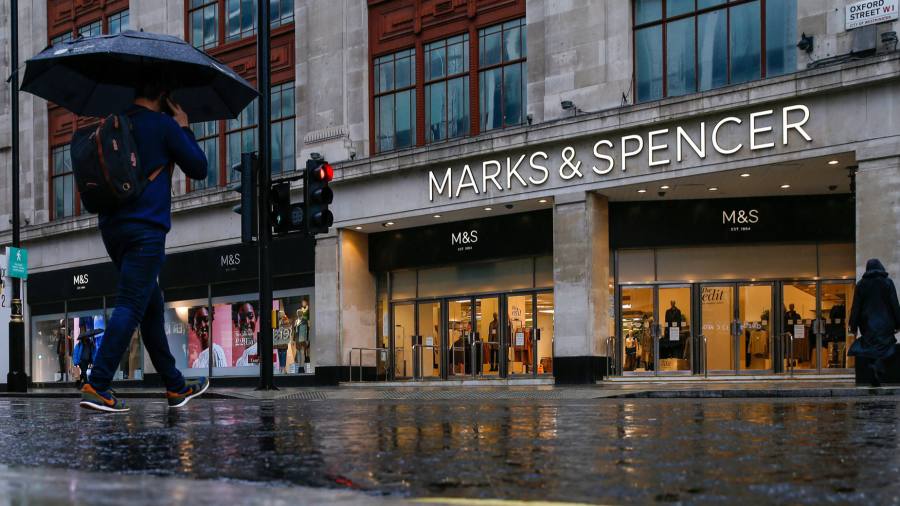
Marks and Spencer is half way through a costly plan to modernise its stores by 2028. The eventual bill will be more than £1bn, but the 138-year-old chain insists the strategy is starting to pay off.
The shake-up of its estate is a key plank in the turnround of the group as it adapts to the digital world and grapples with a rise in costs against a challenging economic backdrop. This month, it vowed to speed it up.
Changes to the high street accelerated by the pandemic and its own efforts to relocate and refit branches were starting to have a real impact, said Sacha Berendji, who as group property, store development and IT director is in charge of overhauling the retailer’s diverse portfolio.
“There’s opportunity in the market,” Berendji told the Financial Times, with the collapse of rivals such as Debenhams freeing up space and landlords becoming more amenable to reducing rents, amending terms or ending leases altogether in the past two years.
M&S, which currently has 247 full-line stores selling clothing, homeware and food, points to significant improvements in sales and profits at stores that have relocated. At a recent investor presentation, it cited a 30 per cent rise in clothing sales and a 75 per cent increase in food since it shut a store in the centre of Welsh town Llandudno and opened a new one on a retail park.
The late Rick Greenbury, executive chair of M&S in the 1990s, saw that out-of-town stores were more cost-efficient, easier to run, allowed for wider ranges and attracted more affluent customers.
He poured money into them, but starved some smaller stores of investment in a bid to hit a £1bn profit target. That long tail of neglected and less efficient space is now Berendji’s problem.
Tackling it began in earnest when Steve Rowe became chief executive in 2016 and launched a programme of “rotation” — moving into bigger and better stores as it shuttered others, citing the way rival Next changed its store estate regularly.
The fashion retailer has 63 fewer stores today than it had in 2013, but almost 1.3mn more square feet of space as it has moved into more out-of-town units.
Rowe’s successor, Stuart Machin, told investors this month that he wanted to accelerate M&S’s overhaul of its estate, seeking to complete it by 2026. It is set to open 104 food shops and shut 67 full-line clothing stores in the next three years. The initiative has been given fresh impetus by the company’s focus on food.
M&S already makes more sales from food than it does from clothing and wants to become a destination for large weekly shops rather than “top-ups” of treats and ready meals.
To do that it needs large, open-plan stores with easy access and free parking, and fewer odd-shaped sites in town centres with limited access.
Berendji cites Chesterfield, where M&S has moved into a former Debenhams store, as an example. “We’ve gone from a [town centre] store with no great access to parking to an edge-of-town retail park and a square box.”
He said the company had “got more realistic” about what it had to do to make these shifts happen quicker. “I could do everything this year if money were no object, but it would damage the business. So we have a set of [financial] guardrails . . . we won’t make decisions that are irresponsible.”
“You have to look for those sites where you think you can do a decent surrender negotiation with the landlord,” he added. “Every single store is evaluated on an individual basis and a big consideration is what happens to the [vacated] unit.”
“Some we will sublet, some we will surrender,” he said. The last resort is to mothball the store, with M&S paying rent, rates and service charges but not actually selling anything.
One factor that has historically deterred the company from overhauling its estate is cost. Since 2016, the group has racked up more than £800mn of exceptional charges relating to UK store restructuring — including redundancies, fit-outs of new stores and payments to end leases early — and expects the total bill to top £1bn.
Another is the complexity of its leases; whereas Next rents almost all its stores, the M&S estate contains freeholds and leaseholds of up to 100 years, as well as stores it owns alongside its pension fund.
Freeholds do at least offer redevelopment opportunities, as in Glasgow where a store on Sauchiehall Street is set to be turned into student accommodation under a model that allows M&S to benefit financially from securing planning permission before selling to a development partner. There are “around half-a-dozen” such opportunities in the pipeline, Berendji said, which means the rotation programme should become more self-financing in its final years.
Shuttering an M&S store often triggers a fierce response from shoppers and local campaigners, with occasional accusations that the company is abandoning elderly customers or deserting town centres.
“I do accept that it’s always a tough decision to leave and we are very mindful of the impact on the high street and the wider town,” said Berendji. “But there are towns where we wouldn’t be maximising the opportunity for our sales or giving consumers the opportunity to shop a better range with us.”
He adds that for all the focus on shifting out of town, the company “is and will remain in plenty of town centres” such as Liverpool and Birmingham, where the company has relocated to vacant former Debenhams stores.
“Where we are staying put, we are operating a really good renewal programme,” he said. “London Colney is a great example of that and we’re also doing a big renewal in [London suburb] Kingston,” he said.